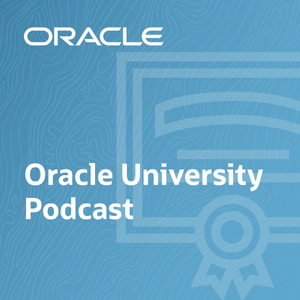
00:00
Welcome to the Oracle University Podcast, the first stop on your cloud journey. During this series of informative podcasts, we’ll bring you foundational training on the most popular Oracle technologies. Let’s get started!
00:26
Lois: Hello and welcome to the Oracle University Podcast! I’m Lois Houston, Director of Innovation Programs here at Oracle University. Joining me as always is our Team Lead of our Editorial Services, Nikita Abraham.
Nikita: Hi everyone! Thanks for tuning in over the last few months as we’ve been discussing all the Oracle Database 23ai new features. We’re coming to the end of the season, and to close things off, in this episode and the next one, we’re going to be talking about the fundamentals of Oracle AI Vector Search. In today’s episode, we’ll try to get an overview of what vector search is, why Oracle Vector Search stands out, and dive into the new vector data type. We’ll also get insights into vector embedding models and the vector workflow.
01:11
Lois: To take us through all of this, we’re joined by Brent Dayley, who is a Senior Principal APEX and Apps Development Instructor with Oracle University. Hi Brent! Thanks for joining us today. Can you tell us about the new vector data type?
Brent: So this data type was introduced in Oracle Database 23ai. And it allows you to store vector embeddings alongside other business data. Now, the vector data type allows a foundation to store vector embeddings.
01:42
Lois: And what are vector embeddings, Brent?
Brent: Vector embeddings are mathematical representations of data points. They assign mathematical representations based on meaning and context of your unstructured data. You have to generate vector embeddings from your unstructured data either outside or within the Oracle Database. In order to get vector embeddings, you can either use ONNX embedding machine learning models or access third-party REST APIs. Embeddings can be used to represent almost any type of data, including text, audio, or visual, such as pictures. And they are used in proximity searches.
02:28
Nikita: Hmmm, proximity search. And similarity search, right? Can you break down what similarity search is and how it functions?
Brent: So vector data tends to be unevenly distributed and clustered into groups that are semantically related. Doing a similarity search based on a given query vector is equivalent to retrieving the k nearest vectors to your query vector in your vector space. What this means is that basically you need to find an ordered list of vectors by ranking them, where the first row is the closest or most similar vector to the query vector. The second row in the list would be the second closest vector to the query vector, and so on, depending on your data set. What we need to do is to find the relative order of distances. And that's really what matters rather than the actual distance.
Now, similarity searches tend to get data from one or more clusters, depending on the value of the query vector and the fetch size. Approximate searches using vector indexes can limit the searches to specific clusters. Exact searches visit vectors across all clusters.
03:44
Lois: Ok. I want to move on to vector embedding models. What are they and why are they valuable?
Brent: Vector emb...
10/22/24 • 13 min
Generate a badge
Get a badge for your website that links back to this episode
<a href="https://goodpods.com/podcasts/oracle-university-podcast-388362/oracle-ai-vector-search-part-1-76747899"> <img src="https://storage.googleapis.com/goodpods-images-bucket/badges/generic-badge-1.svg" alt="listen to oracle ai vector search: part 1 on goodpods" style="width: 225px" /> </a>
Copy